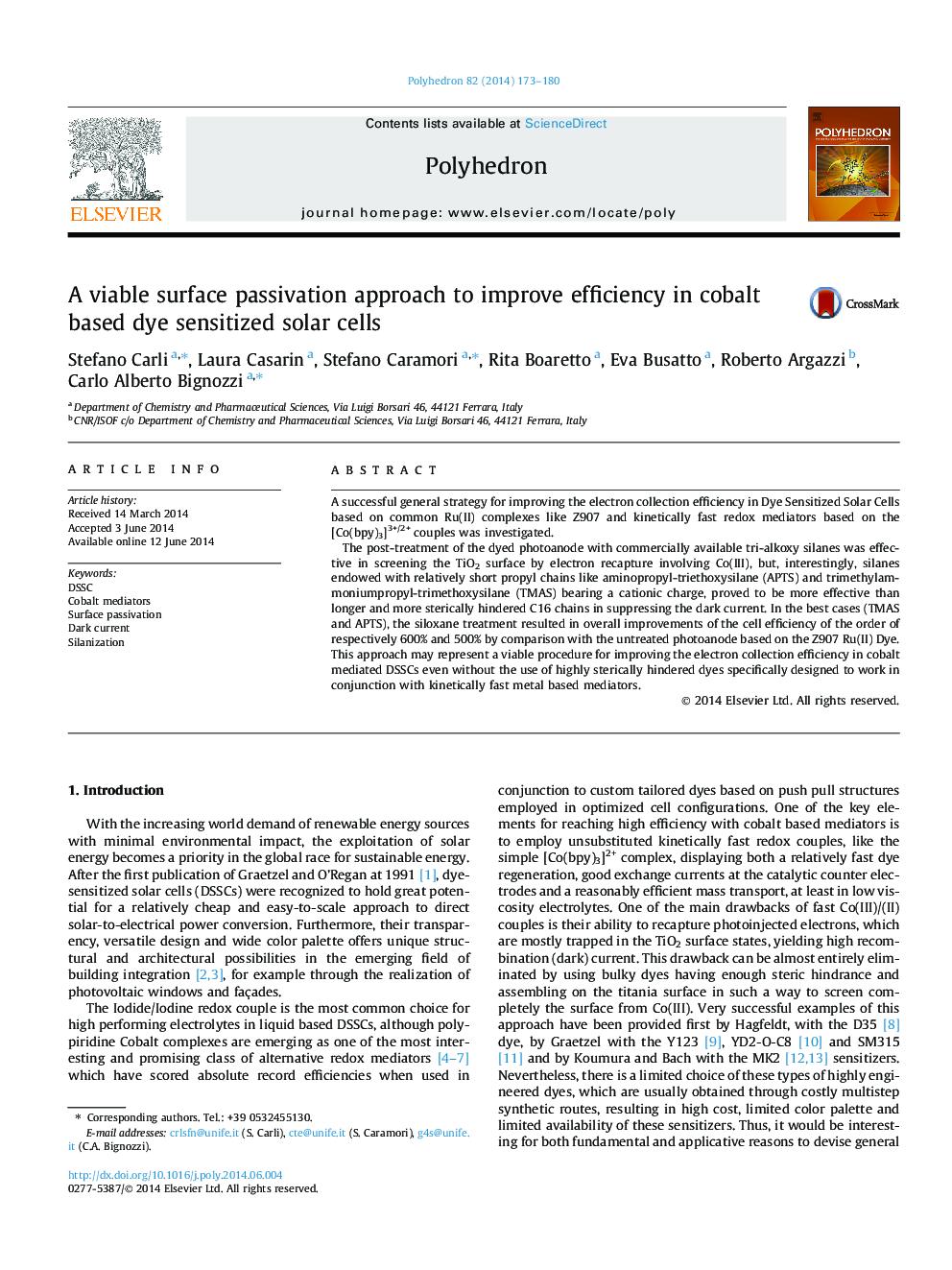| Article ID | Journal | Published Year | Pages | File Type |
|---|---|---|---|---|
| 1336452 | Polyhedron | 2014 | 8 Pages |
A successful general strategy for improving the electron collection efficiency in Dye Sensitized Solar Cells based on common Ru(II) complexes like Z907 and kinetically fast redox mediators based on the [Co(bpy)3]3+/2+ couples was investigated.The post-treatment of the dyed photoanode with commercially available tri-alkoxy silanes was effective in screening the TiO2 surface by electron recapture involving Co(III), but, interestingly, silanes endowed with relatively short propyl chains like aminopropyl-triethoxysilane (APTS) and trimethylammoniumpropyl-trimethoxysilane (TMAS) bearing a cationic charge, proved to be more effective than longer and more sterically hindered C16 chains in suppressing the dark current. In the best cases (TMAS and APTS), the siloxane treatment resulted in overall improvements of the cell efficiency of the order of respectively 600% and 500% by comparison with the untreated photoanode based on the Z907 Ru(II) Dye. This approach may represent a viable procedure for improving the electron collection efficiency in cobalt mediated DSSCs even without the use of highly sterically hindered dyes specifically designed to work in conjunction with kinetically fast metal based mediators.
Graphical abstractA successful silanization strategy based on the co-adsorption of molecular alkoxy-silanes greatly improved the electron collection efficiency in Dye Sensitized Solar Cells based on common Ru(II) complexes in the presence kinetically fast cobalt redox. In the best cases cell efficiencies improved by 600% with respect to the untreated photoanode.Figure optionsDownload full-size imageDownload as PowerPoint slide
